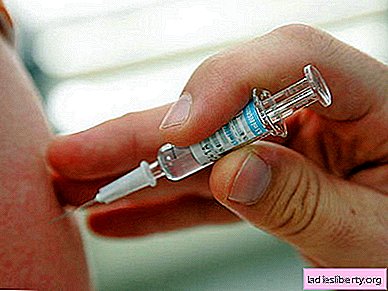
Some supporters of a healthy lifestyle consider eating fat to be so dangerous that it is strongly excluded from its diet. Such a thoughtless step leads to disastrous results - fat-free food deprives the body of minerals and vitamins that are essential for the health and normal functioning of all organs.
Fatty acids are a special group of lipids that are not produced in the human body and must come from food. Depressed mood, dry scaly skin, memory impairment and joint pain, high blood pressure and even schizophrenia are the sad results of their lack.
What is Omega-3
The discovery of polyunsaturated fatty acids (PUFA) by mankind is due to the Danish explorer Jorn Duerberg and ... the Greenland Eskimos. In the seventies of the last century, a doctor from Denmark was able to substantiate the existing connection between the diet of Aboriginal people consisting of fatty fish and the almost complete absence of cardiovascular diseases. Thus began the countdown of the unique capabilities of PUFAs.
Depending on the structure of molecules, polyunsaturated acids are divided into two families - Omega-3 and Omega-6, and both of them are essential for the functioning of the body. However, if we get Omega-6 with food products even in larger quantities than necessary, then Omega-3, which is mainly contained in fish, is undersupplied. This happens not only because of the lack of necessary products, but also their improper preparation.
Polyunsaturated fatty acids have only one, but an extremely important disadvantage - they oxidize quickly, especially when heated and interact with air. As a result, it turns out that it is no longer a beneficial substance, but a substance carrying a harm. For example, flaxseed oil contains a sufficient amount of omega-3, however, when heated, it becomes carcinogenic.
Getting Omega-3 with food

Many people sincerely believe that they consume a sufficient amount of products containing Omega-3, and their body is well protected. Is it so? Consider exactly where the fatty acids are:
1. Fish - sea, fatty varieties - halibut, sardines, salmon, herring, mackerel. The content of PUFAs in it is due to the nutrition of plankton and marine plants, therefore, captive-bred fish do not possess the necessary properties. In addition, the fish should not be frozen, but fresh. It is best to use it in lightly salted or canned form.
2. Eggs - in the shop, which are most often present on our table, 20 times less Omega-3 than in the village, which is again associated with food.
3. Beef - if the cow walked on the grass, and did not receive only mealy feed.
4. Seafood and caviar.
Do our daily menu always contain these products that meet the listed conditions? And is it affordable for everyone to adjust their diet? But there is a way out - Omega-3 in capsules, which are made on the basis of natural components and protected from oxidation. The older generation perfectly remembers the nasty fish oil, which they “obligatoryly treated” in kindergartens and schools. Unfortunately, this tradition is a thing of the past, although in many European countries Omega-3 is an essential component of the daily diet of both adults and children. Russians are concerned about getting the unsaturated fatty acids so necessary for the body themselves.
Useful properties of omega-3
Fatty acids are not just lipids. Without them, it is impossible to synthesize prostaglandins, which are necessary for regulating blood pressure and temperature, maintaining the normal sensitivity of nerve fibers, and participating in muscle contraction and other physiological processes. They serve as reliable protection for the endocrine, nervous and cardiovascular systems against diseases. The drug Omega-3 contains polyunsaturated fatty acids dekozhexaenoic (DHA) and eicosapentaenoic (EPA), which is why it has all the beneficial properties of the substances we need so much:
- dilates blood vessels and prevents the formation of blood clots;
- promotes the absorption of calcium and phosphorus;
- lowers blood pressure;
- has anti-inflammatory effect;
- actively participates in the healing of stomach ulcers and normalizes digestion;
- is a prophylactic agent for oncological diseases and significantly slows down tumor growth;
- helps to cope with stress;
- activates brain activity;
- eliminates fragility of hair, nails, increased dryness of the skin;
- normalizes the absorption of fat;
- relieves nervousness.
Omega-3 reliably neutralizes harmful fats that come from food, prevents the deposition of cholesterol and slows the aging of the body. In addition, the drug has anticarcinogenic activity.
Omega-3 during pregnancy

The sad statistics show that Russian women and children have a deficit of PUFAs at 80%. Meanwhile, the prenatal period is associated with a special risk of their shortage, since the available maternal reserves are rapidly melting with the development and growth of the fetus. Using the baby Omega-3 during gestation, according to fifteen years of research by British scientists, gives excellent results:
- kids have higher mental development;
- motility and coordination of children is much higher than usual level;
- communication skills are better developed;
- children have the ability to learn foreign languages;
But the future mom's lack of omega-3 threatens the little one with improper formation of brain cells, inability to read, poor memory and low intelligence. A crumb can be born with neurological diseases or be prone to their occurrence in the future.
Taking Omega-3 during pregnancy reduces the risk of preterm birth, serves to prevent eclampsia and prevents the onset of postpartum depression. Consumption of fish, which serves as the main source of fatty acids, is not greatly encouraged by doctors because of potential contamination with methyl mercury, which has a detrimental effect on the baby. Therefore, Omega-3 is its excellent substitute and reliable supplier of substances necessary for the development of the fetus. According to the recommendations of the World Health Organization, expectant mothers need to take at least 300 mg of omega-3 daily. However, the exact amount will help determine the doctor, without his recommendations it is better not to determine the dose yourself.
It is interesting: Over the course of long-term studies, scientists at the University of California and Pittsburgh have established an interesting pattern: for children to be born with heightened intellectual abilities, their moms should have an hourglass figure loved by many men. This is explained quite simply. Omega-6 acids predominate in the fatty lining of the waist, which are famous for their aggressiveness with respect to omega-3 and negating their beneficial properties. Omega-3 fatty acids are concentrated in the hips, therefore, the greater the difference between waist and hip volume, the more intelligent the baby will be born.
Omega-3 for children

Hyperactivity, scattered attention, problems with study, disturbed sleep at night, outbreaks of irritation and anger are not a complete list of the problems that arise in children as a result of the lack of omega-3 fats. Regular consumption of fish oil activates brain activity at any age, eliminates impulsiveness and aggression, improves mood, strengthens eyesight, and increases the speed of thinking. The babies do not have to suffer from the unpleasant smell and taste, which had the "Soviet" fish oil. Special children's drug Omega-3 has a pleasant lemon flavor and is offered in liquid form. Experts strongly recommend taking the drug daily, throughout the growth of the child.
Omega-3 for women

Essential fatty acids are essential for the beautiful half of humanity. Do not pay attention to the word “fat” that does not cause delight among the ladies - this is not the component that threatens a thin waist. Omega-3 helps you:
- get rid of unpleasant feelings in critical days;
- reduce the risk of breast diseases, including cancer;
- to avoid the appearance of tumors in the rectum;
- increase the calcium content and avoid osteoporosis;
- reliably defend against depression;
- eliminate hormonal imbalance.
It is especially important to include Omega-3 in your diet for overweight women who are on a diet and are at risk of cardiovascular diseases.
It is interesting: After the invasion of the American occupation forces in Japan at the end of World War II, many indigenous people had to switch to American products. Traditional Japanese cuisine offers a variety of foods containing fatty acids. After being forced to exclude them from the diet, the Japanese soon began to complain massively about chronic fatigue, decreased stamina, depression, frequent colds and joint pains and this once again vividly illustrated the undoubted use of fatty acids (in particular, Omega-3) for the human body.
Elena Malysheva about the benefits of Omega-3
Possible contraindications Omega-3
With the undoubted benefits of Omega-3 (meaning its reception in the form of capsules as an addition to food), some limitations in its purpose are present. You should not take it if:
- there are stones in the urinary or gallbladder;
- diagnosed with open tuberculosis;
- thyroid function is impaired;
- the doctor diagnosed renal failure;
- hemorrhagic syndrome is present;
- There is an allergy to fish oil.
For the manufacture of omega-3 capsules are used only safe natural ingredients. The shell is a fish gelatin, and production is carried out under strict control at all stages. Fish oil undergoes a triple degree of purification and extremely rapid encapsulation, which guarantees a high degree of freshness. Before using Omega-3, it is necessary to consult with a doctor about the possibility of its use and daily dosage.
Professor of Cardiothoracic Medicine Stig Sten is one of the world-renowned experts in the field of resuscitation, cardiac and pulmonary transplantation. specializes in nutrition and its effects on health. On the basis of the laboratories and clinics of the Research Center Ighelyos, which he founded in 1998, the drug Omega 3 Wellnes of the highest quality standard was developed. The drug is available in capsules for adults and in liquid form for children from one year. Velnes products for children are designed to provide the children's body with all the nutrients needed daily for full development and growth.
What is their uniqueness?
The composition of "Omega-3" includes natural fish oil, providing the intake of essential fatty acids.
Top quality Products are manufactured in Sweden by a GMP certified company. Fish oil is obtained in a high-tech and environmentally friendly way from fish caught in the Pacific Ocean and is subjected to 5-step cleaning. Naturalness Products do not contain artificial flavors, preservatives, dyes and GMOs, as well as sugar and gelatin. Omega-3 is a natural lemon oil.
Omega-3 Wellnes can be taken in pure form, added to soup or yogurt, seasoned salad or sprinkled with a pinch of salt.

Capsulated Omega3 Wellnes
• Environmentally friendly and safe
• Undergoes molecular distillation and meets GMP production standards.
• Derived from fish rich in EPA and DHA
• Does not contain heavy metals, contaminants and toxins
• Gelatin capsules do not contain bovine and porcine gelatin
• Contains natural fish oil in the right ratio of essential fatty acids
Active ingredients:
Omega-3 is a high-quality source of essential polyunsaturated fatty acids.
• Pure and natural concentrated fish oil, purified at the molecular level, is pharmaceutically approved.
• Contains essential fatty acids ALA, EPA and DHA. One capsule contains: 82 mg EPA, 55 mg DHA, 150 mg Omega-
Does not contain heavy metals and other toxic substances.
Composition: Fish oil (500 mg). Auxiliary ingredients: fish gelatin, glycerol, water.











